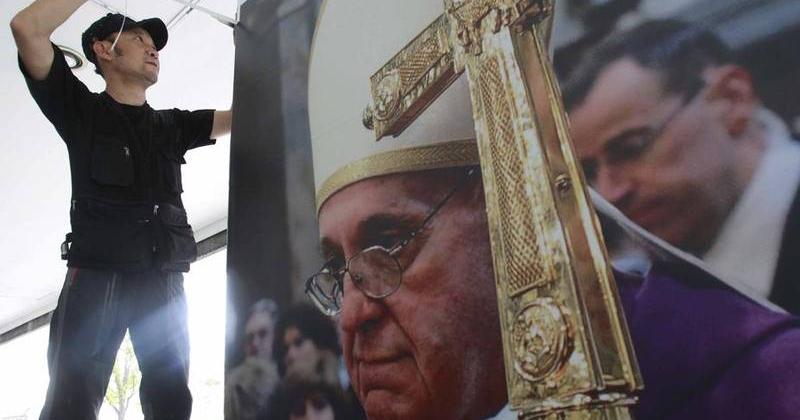Pope Francis has arrived in Seoul on his third international trip. He is visiting Korea on the occasion of the Asian Youth Day that is being celebrated in Daejeon and will also proclaim 124 lay martyrs saints. These individuals paid the price of their faith with their life.
This is the first time ever that a Pope has flown over China, a country the Holy See has not had diplomatic relations with since the days of Mao Tse-tung. As is tradition when a Pope flies over a country, Francis could send authorities a message with his greetings. Back in 1989,the Chinese government forbade John Paul II from flying over the country. The papal plane which was travelling from Rome to Seoul (6-9 October 1989) therefore had to take a longer route. On that occasion the papal plane was given permission to fly over the Soviet Union and Wojtyla sent a telegram to the then President and General Secretary of the Communist Party of the Soviet Union, Mikhail Gorbachev, with his wishes and greetings.
After his trips to Brazil and the Holy Land, the Pope - whose focus has always been on the peripheries – now begins his first visit to Asia, a continent which is key to Christianity. The figures relating to Christians in Korea are somewhat miraculous: Fifty years ago Christians accounted for just 2% of the population in a country where faith in Christ took off thanks to a few lay scholars. Today that figure has risen to 30%. There are 5,5 million Catholics in Korea and they represent more than 10% of the Korean population. Baptisms are on the rise and even celebrities are turning to the faith. The message Francis will be bringing to the Korean Church, which has been built on the blood of martyrs and not by clerics, will be this: Don’t rest on your laurels and be too satisfied with your growth, always be attentive to the poor – as the Korean Church always is – and to their need for assistance but also for social promotion and dignity.
Francis’ visit will be an opportunity for him to speak to the whole of Asia, to its thousand-year-old cultures that are light years away from that of the West. Although there has been surprising progress in terms of evangelisation in Korea, Francis is well aware of the fact that Christians only make up 3% of the total population. The Pope will return to Asia in a few months time – next January – to visit Sri Lanka and the Philippines, to show his solidarity to the populations affected by tsunamis and typhoons.
On this visit to Korea Francis will approach one of the world’s historic “walls”: the one which divides North and South Korea and has been at the centre of international tensions. On 18 August, the final day of his visit, Francis will celebrate a mass “for peace and reconciliation in Korea.”
In recent months, the Holy See had asked the Pyongyang regime to allow some young people to take part in the papal ceremonies but it received a negative response.
During his visit to the Holy Land last May, Francis did make some unforeseen gestures of great significance. For example, the moment of silent prayer in Bethlehem, before the cement wall built by the Israelis. The situation in Korea is more difficult. Nevertheless, Cardinal Andrew Yeom Soo-jung’s visit to North Korea last 21 May led to speculations about a potential papal visit.
The Archbishop of Seoul, the first cardinal to step foot inside North Korea, had crossed the border to pay a brief visit to the industrial complex in Kaesong. Kaesong is an area of economic production on the border between the two Koreas, the result of cooperation between the governments of North and South Korea, where North and South Korean citizens work side by side. Although there is not even a hint of a papal visit here in the official schedule, Francis would ideally like to go.
